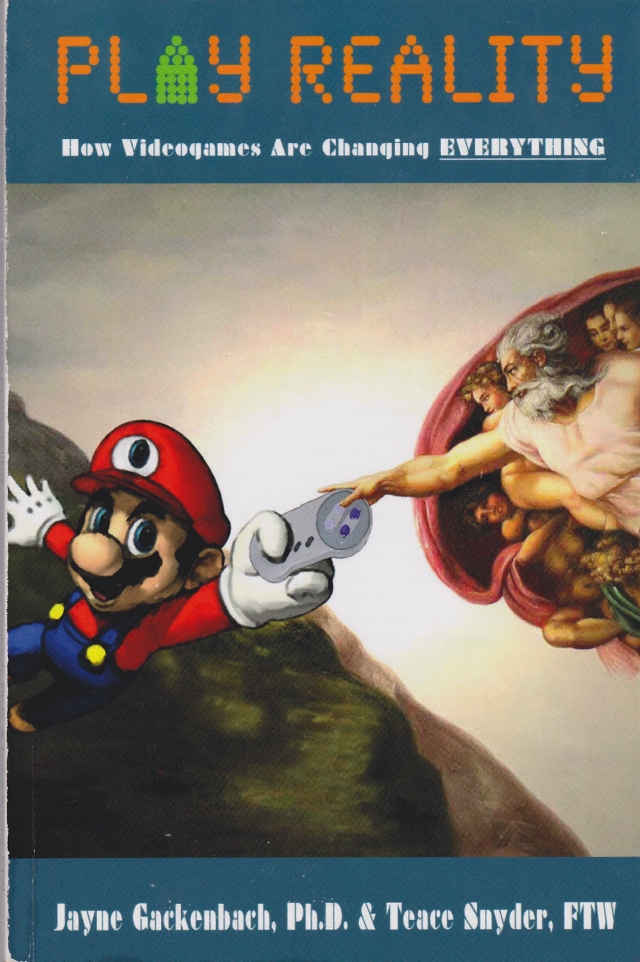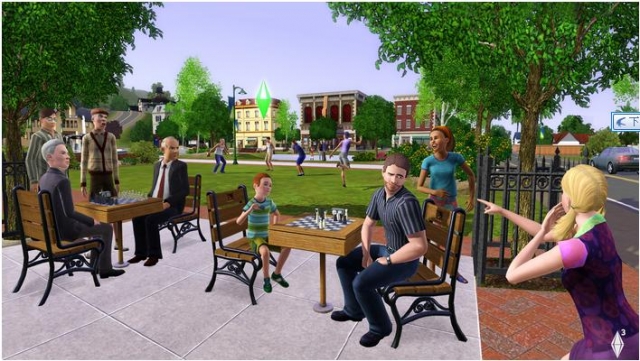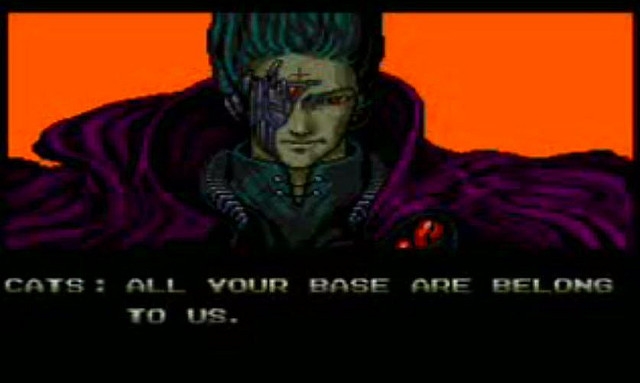
gamrRead: Play Reality: How Videogames Are Changing Everything - Article
by VGChartz Staff , posted on 13 July 2012 / 3,302 ViewsWelcome to another edition of gamrRead, a series of articles dedicated to discussion of books about the videogame industry or culture (excluding strategy guides). For this entry I read Play Reality, by Jayne Gackenbach, Ph.D. and Teace Snyder. It's a book which examines the way videogames continue to change the way we experience reality.

Title: Play Reality: How Videogames Are Changing Everything
Author: Jayne Gackenbach, Ph.D. & Teace Snyder
Publisher: In association with Original Cliché Entertainment
Original Publication Year: 2012
Page Count: 101
ISBN: 978-1-105-30452-1
Excerpt: “Gamification is basically just the process of making real life feel as fun, engaging and, especially, as rewarding as playing a videogame. Because as important as graphics, story and gameplay can be, a huge part of what makes videogames as much fun as they are, are the ways in which the player is frequently rewarded for playing: whether it’s with valuable in-game items, XP, currency, achievements, un-lockable items, or maybe just something as simple as a game saying ‘good job.’” (p. 62)
If you’ve been a serious gamer for any significant portion of your existence you've probably noticed the subtle ways gaming has altered your everyday life. Stuff like less money in your wallet, dangerously overworked thumbs, and a haphazard sleep cycle dependent upon new game releases are obvious. However, have you ever wondered how the rise of videogames could potentially affect your health, the way you work, or the way you dream? Those are just some of the questions explored in Play Reality. It's a truly interesting subject matter for a book, wouldn’t you agree? I thought so at any rate.
Each chapter of Play Reality is preceded by quotations attributed to the likes of George Carlin, Ronald Reagan, Shakespeare, the band Tool, Shigeru Miyamoto, and the game Zero Wing (“All your base are belong to us!”), though their relevance to the topic of discussion is at times questionable. The book begins with a (very) brief history of videogames that begins with Atari’s Pong, covers the ensuing success and legal battles, explains the rise of Nintendo in Japan and the world, delves into the controversy behind violence in videogames, and jumps ahead to the present day where gaming is shaped by things like Xbox Live, Facebook, and MMOs. While I admit I learned a few interesting tidbits by reading this opening chapter, it is by no means meant to be comprehensive and compresses nearly half a century of gaming history into a short summation most dedicated gamers over the age of 20 should find largely unrevealing.
Other chapters are dedicated to subjects such as videogame addiction, the effects of videogames on violent behavior, and examining the role of games in our evolving cultural landscape. There are a few truly interesting nuggets of information to be found in these chapters, such as an examination of the sophisticated economy that grew between players of Everquest through the creation and tracking of Dragon Points, independent of the developer’s input. Snyder and Dr. Gackenbach note that at one point the GDP for that game would have ranked as the 77th highest among the world economies. Other interesting factoids delve into the celebrity status enjoyed by professional gamers in South Korea and the therapeutic effects of gaming even when up against a boss that makes you controller-out-the-window angry.

One of the most interesting chapters in Play Reality tackles the subject of “Serious Games” and Gamification. When they talk about “Serious Games”, they don’t mean Call of Duty or even DotA 2 — though I know many gamers take such titles very seriously — but rather a game developed with the intention of educating or conveying an important message. One such example brought up in the book is a game called Nanoswarm, created so doctors could better explain the importance of a healthy lifestyle to adolescents suffering from Diabetes. Most so-called “Serious Games” aren’t found at your local GameStop and commonly receive funding from the government and government agencies, or charitable organizations, as a means to train their members or influence behavior.
Gamification, like the above excerpt explains, is all about motivating people to accomplish goals in real life by using reward methods similar to those found in videogames. A brilliant analogy used to highlight this point is the vastly popular Sims series, which literally makes a game out of the banality of everyday life. The book hypothesizes that in the future government subsidies may exist to motivate citizens to eat healthier, exercise more, or even file taxes on time, much like you earn an Achievement or Trophy for accomplishing special tasks in a game. Companies will also capitalize on Gamification to encourage people to consume their products in ways we can already see today, with things like special prizes for drinking cans of Coke or exclusive rewards for registering your games with Club Nintendo.
A chapter on the intersection between videogames and dreaming is similarly captivating. Dr. Gackenbach made a career out of researching dreams and noticed considerable overlap between dreaming and gaming. Along with her students she has conducted studies that have found that “high-end” gamers are more likely to have to ability to control their dreams (as well as feel less threatened when experiencing moments of terror while dreaming) than non-gamers. The study was not restricted to gaming; also included were the effects of consuming other types of media such as TV and films. Given Dr. Gackenbach’s background, it makes sense that this section would be one of the highlights of Play Reality.

Play Reality is not a long read. I do not usually subscribe to the notion that books need to be long to be good; in fact I actually think brevity is a noble quality for most books. Yet in this case I breezed through the book’s nine chapters in one sitting, not because I was thoroughly engrossed with the information it presents, but because I kept turning the page hoping to find some startling revelation that would make me feel the book was truly worth reading and recommending. Every time I found myself really starting to get into a certain topic the uneven writing style became a point of contention before the discussion came to an abrupt and unsatisfying end.
While the book has two listed authors, the actual words that fill up the pages of this book are the sole work of Teace Snyder. His voice is the only one that comes through to the reader, while the research behind those words was conducted by his mother, Jayne Gackenbach, in her position as a videogame and dream researcher at Grant MacEwan University. The reason given for this arrangement is that it would be more natural for Snyder, as a lifelong gamer, to convert her findings into terms the average gamer and non-gamer would find more suitable. The results don’t quite reflect that honorable goal. I am willing to concede that this just may apply to me as someone who, in the midst of their University career, spent the last several months pouring through various texts on Psychology, but I kept waiting for the book to get to the real science. Play Reality is not particularly well written and fails to find the sought after middle ground between scientific text and enjoyable non-fiction for gamers for a number of reasons, including that most of the citations behind the studies recounted in this book were purposely omitted "to keep things casual," Snyder claims.
This underscores a palpable sense of condescension that unfortunately permeates the pages of Play Reality. For example, here is how Snyder chooses to express the effect of violent videogames on aggressive behavior: “Violent videogames + violent douchebags = high probability of increased violence / Violent videogames + mainstream media’s depiction thereof = Presumptuous erroneous shit storm (p. 43).” Evidently, the author is very familiar with the level of discourse found on the notoriously hostile videogame forums of the web and thought it would work just as well in a book. His whole sense of humor seems out of whack. Even his few good quips are drowned out by too many instances where the writing comes off as loud and obnoxious, with Snyder believing he can get away with just about anything and forgetting that the reader has the power to shut the book and shake his or her head disapprovingly, which I found myself doing constantly.

I don’t regret reading Play Reality at all. In fact, I find many of Dr. Gackenbach’s conclusions fascinating and thought provoking. The book is at its best when it speculates about the way videogames will continue to change our lives as the technology evolves and becomes more widespread. However, the book is not a be-all, end-all source of contemporary videogame research. Reading it certainly won’t make you an expert on the subject, but that was never what it set out to do. What it does accomplish, however, is it acclimates readers with the general direction the research is heading, and dispels a few widely believed misconceptions along the way. I find I can forgive many of Play Reality’s shortcomings more easily once I pause and reason that the goal is to be the starting point for inquiry and potentially kindle further interest within readers that will result in them seeking out more research on their own. For what it’s worth, I definitely feel the urge to read another book like Play Reality some time in the future, just one that is hopefully more in-depth and less patronizing.
About the Authors:
Dr. Jayne Gackenbach is a professor and videogame and dream researcher at Grant MacEwan University where she has worked for the past 21 years. Her previous works include Sleep and Dreams: A Sourcebook and Cyber Rules. Teace Snyder is an avid writer and gamer who oversees his website,http://www.teace.ca. He is the author of several fictional works including Popped Culture and Reverie. They also happen to be mother and son. This is the first book they have co-authored together.
If you have your own opinions you would like to share about Play Reality or wish to suggest a book for future entries, please do so in the comments section below. Happy reading, gamers!






















